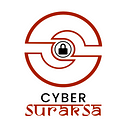How Can Healthcare Organizations Protect Patient Data from Cyber Threats?
In today’s digital age, healthcare organizations are not just safeguarding the health of their patients, but also their sensitive personal information. The allure of valuable patient data has made healthcare an attractive target for cybercriminals. The repercussions of data breaches can be severe, ranging from identity theft and medical fraud to outright blackmail. Therefore, it’s imperative that healthcare organizations take proactive steps to protect patient data from cyber threats. In this blog post, we’ll explore various strategies to achieve this crucial objective.
1. Implement Strong Security Controls
The first line of defense against cyber threats is to establish robust security controls. This includes the deployment of firewalls, intrusion detection systems, and data encryption to protect networks and data from unauthorized access. By erecting these digital barriers, organizations can significantly reduce the risk of data breaches.
2. Educate and Train Staff
Employees play a critical role in safeguarding patient data. It is imperative to educate and train staff on cybersecurity best practices. They should be made aware of the latest cyber threats and equipped with the knowledge to protect themselves and the organization from potential attacks. Regular training sessions and awareness campaigns can help foster a security-conscious culture within the organization.
3. Develop a Comprehensive Cyber Incident Response Plan
No organization is immune to cyber threats, so it’s crucial to be prepared. Healthcare organizations should create and implement a cyber incident response plan. This plan should outline the steps the organization will take in response to a cyber attack, including containing the damage, notifying affected individuals, and restoring operations swiftly. A well-prepared response can minimize the impact of a breach and demonstrate a commitment to patient data security.
Also Read: Why Is Cybersecurity Crucial for the Healthcare Industry?
4. Segment Networks
To further bolster data protection, healthcare organizations should segment their networks. This entails dividing the network into different segments, such as one for patient data and another for administrative data. This can help prevent attackers from gaining access to patient data even if they breach other parts of the network.
5. Use Multi-Factor Authentication (MFA)
Multi-factor authentication (MFA) adds an additional layer of security by requiring users to provide two or more factors of authentication. For example, a password and a one-time code generated by a mobile app. This makes it significantly more challenging for attackers to gain access to accounts, even if they manage to steal a password.
6. Encrypt Patient Data at Rest and in Transit
Encrypting patient data both at rest and in transit is a critical safeguard. This encryption ensures that data is scrambled in a way that makes it unreadable without the encryption key. Even if the data is stolen or intercepted, it remains protected from unauthorized access.
7. Monitor Systems and Networks
Constant vigilance is essential in the battle against cyber threats. Monitoring systems and networks for suspicious activities is crucial. Advanced security monitoring systems can quickly identify and respond to cyber attacks, helping to minimize potential damage.
8. Continuously Update Security Controls
Cybersecurity is not a one-time event. Healthcare organizations must continuously update and adapt their security controls to stay ahead of the evolving threat landscape. Regular assessments and audits are essential to identify vulnerabilities and maintain robust defenses.
Additional Tips for Healthcare Organizations:
- Use strong passwords and change them regularly to prevent unauthorized access.
- Exercise caution with links and email attachments to avoid falling victim to phishing attacks.
- Avoid using public Wi-Fi networks for accessing sensitive data, as they are vulnerable to eavesdropping.
- Keep software up to date to patch known vulnerabilities.
- Develop a plan for regularly backing up data to mitigate the impact of data loss in the event of a breach.
By diligently following these strategies and tips, healthcare organizations can significantly enhance their ability to protect patient data from cyber threats and ensure compliance with applicable regulations. Data security is not just a responsibility but a commitment to the patients who entrust their well-being and information to these organizations.
